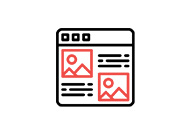Technical SEO
Examples of Technical SEO Problems
When most potential clients come to us, we hear the same thing over and over. “My current SEO provider started off strong…
Read ArticleBy its very nature “Technical SEO” can be overwhelming, the word technical itself is intimidating. Our team of SEO experts will help prioritize and eliminate your technical SEO issues with ease.
Our approach to Technical SEO is to prioritize the most impactful and detrimental errors first moving through to the less harmful errors improving your site’s performance along the way.
The consequences of not addressing technical SEO issues can be deadly to your website. Certain Technical issues push Google away from adding your site to Google’s search results.
The result of our technical SEO audit is a website well-liked by Google and users allowing for better placement in search engines.
Prioritizing your tech errors will eliminate the most harmful errors first lifting barriers from ranking in search engines. We categorize errors into three groups Critical Errors, Errors, and Warnings. Critical Errors are 500, 400, and no crawl errors. Examples of Regular Errors would be broken links and duplicate content. Warnings are typically errors like missing meta descriptions, Multiple H1 tags, long titles, and other optimization issues, warnings are typically signs of poor optimization.
This is generally completed within the first month or two depending on the quantity and complexity of the errors. The result of our technical SEO clean is a site with very few warnings,(this is dependent on the platform and design of the site).
We run 40 different technical SEO & on-site SEO tests. Our technical SEO crawls allow us to find, fix, monitor, & prioritize your site crawl errors. We run a minimum of 1 site crawl of your site each month, when fixing an issue we may run multiple crawls confirming the issue is fixed. It is important for the technical errors to come back resolved, becaouse our software is made to mimic Google’s crawlers if an error comes back positive its likely crawlers would see the same error.
Making sure Google can find, read, & file your website is fundamental to SEO.
A flat and properly organized website allows users and crawlers to find content with ease improving rankings.
2 pages that are identical or closely resemble each other are considered duplicate and can adversely affect your site.
Microdata gives crawlers more information about tags on your site, such as, this content in this tag is an address
With the increased use of smartphones, fast loading websites are becoming more & more important for SEO
The above errors only scratch the surface. There are several other error types that may occur on your website.
Technical SEO is Fundamental to your website’s visibility Major technical SEO issues can keep your website from being shown in search results. Common terms you hear in relation to Technical SEO are Crawlability, Rendering, and Indexing. Having a website crawled, rendered, and indexed is fundamental to SEO and increasing visibility.
Crawlabilty refers to the ease of which Google (and other search engines) can access your website. If Google is unable to access pages within your website, it will not show in search results.
Rendering refers to Google’s ability to comprehend the content on your website. Google parses HTML, CSS, JavaScript, and other code files on your website making sure no errors occur. The more errors Google encounters the deeper Google hide you in their index.
Indexing refers to Google’s adding your website to their virtual filing cabinet.
The result of thorough and professional Technical SEO is a website Google loves; a site that allows Google crawlers to easily navigate, access, and parse the site information into their index. Our swift site cleanup results in a website that removes barriers to rankings quickly fostering greater and faster ranking improvements
“I used to have an SEO company halfway across the country. They never answered their phone and gave me the cookie-cutter campaign approach. Since going with Firestarter, the phone won’t stop ringing and they have gotten me leads that have paid for their services for years to come!” – Sean W.
Our Technical SEO efforts removed critical errors, leading to a rebound in rankings immediately. Since the start of the campaign, nearly 400 phone calls have been received.
“I used to have an SEO company halfway across the country. They never answered their phone and gave me the cookie-cutter campaign approach. Since going with Firestarter, the phone won’t stop ringing and they have gotten me leads that have paid for their services for years to come!” – Sean W.
Our Technical SEO efforts removed critical errors, leading to a rebound in rankings immediately. Since the start of the campaign, nearly 400 phone calls have been received.

When most potential clients come to us, we hear the same thing over and over. “My current SEO provider started off strong…
Read Article